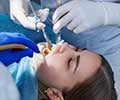|
YEAR
|
MILESTONES
|
|
2700 BC
|
Shen Nung the second Chinese emperor tested the effects of 300 drugs on himself and explained the narcotic properties of the Kemp plant.
|
|
1350 BC
|
The soporific and aphrodisiac properties of the mandrake were well known among the Egyptian Pharaohs.
|
|
77 AD
|
Dioscorides Pedanius a Greek physician in his fourth book of Materia Medica gave details about the various substances that induce anesthesia. He coined the term anesthesia meaning lack of sensation in Greek.
|
|
1037
|
Avicenna an Iranian philosopher and physician advocated that the most powerful stupefacient is opium
|
|
1460
|
Heinrich von Pfolsprundt, a German military surgeon was the first to give an account of the soporific sponge (a recipe that suppresses sensation of pain) used in the treatment of gunshots.
|
|
1665
|
Sir Christopher Wren an English Architect with the help of Robert Boyle was the first to infuse opium and perform intravenous anesthesia in dogs.
|
|
1765
|
Matthew Turner an English chemist and surgeon was the first person to produce and sell ether. He recommended inhalation of sulfuric ether as a treatment for headaches.
|
|
1772
|
Joseph Priestley an English chemist discovered nitrous oxide.
|
|
1786
|
Cornelius Celsus described in detail about the preparation of the anodyne pills in the 46th edition of the Roman encyclopedia.
|
|
1817
|
Friedrich Serturner a German apothecary coined the term morphine and also elucidated the narcotic properties of opium.
|
|
1834
|
Jean Baptiste Dumas a French chemist unraveled the chemical structure and coined the term chloroform.
|
|
1847
|
Marie Jean Pierre Flourens and Francois-Achille Longet reported the effects and mode of action of ether on the central nervous system.
|
|
1847
|
Sir James Young Simpson a Scottish physician introduced chloroform as an anesthetic agent during childbirth. Chloroform was first used on Queen Victoria, during her eighth delivery.
|
|
1847
|
Edward H. Barton at Vera Cruz, Mexico was the first to use sulfuric ether as the anesthetic agent for a leg amputation during wartime.
|
|
1856
|
John Snow, an English physician designed the chloroform inhaler, which delivered the anesthetic agent at optimum levels. He was the first to perform endotracheal anesthesia on a rabbit.
|
|
1860
|
Etienne Jules Marey a French physician discovered the sphygmograph. This device helped to record the pulse form on the forearm.
|
|
1870
|
Joseph T Clover an English surgeon improved the techniques of gas delivery and cautioned the physicians to monitor the vital signs.
|
|
1875
|
Claude Bernard a French physiologist Discovered the nerve muscle blocking action and the introduced the use of mixed anesthesia.
|
|
1878
|
Paul Bert the French physiologist along with the American surgeon Edmund W Andrews introduced nitrous oxide in Anesthesiology.
|
|
1907
|
Frederick J. Cotton and Walter M. Boothby invented an apparatus for the delivery of nitrous oxide, ether and oxygen.
|
|
1908
|
A.D Waller designs the chloroform balance, which determines the concentration of the vapor, received by the patient.
|
|
1910
|
Lincoln F. Sise invented the apparatus “introducer” for insertion of lumbar puncture needles.
|
|
1936
|
American society of Anesthetist was founded.
|







